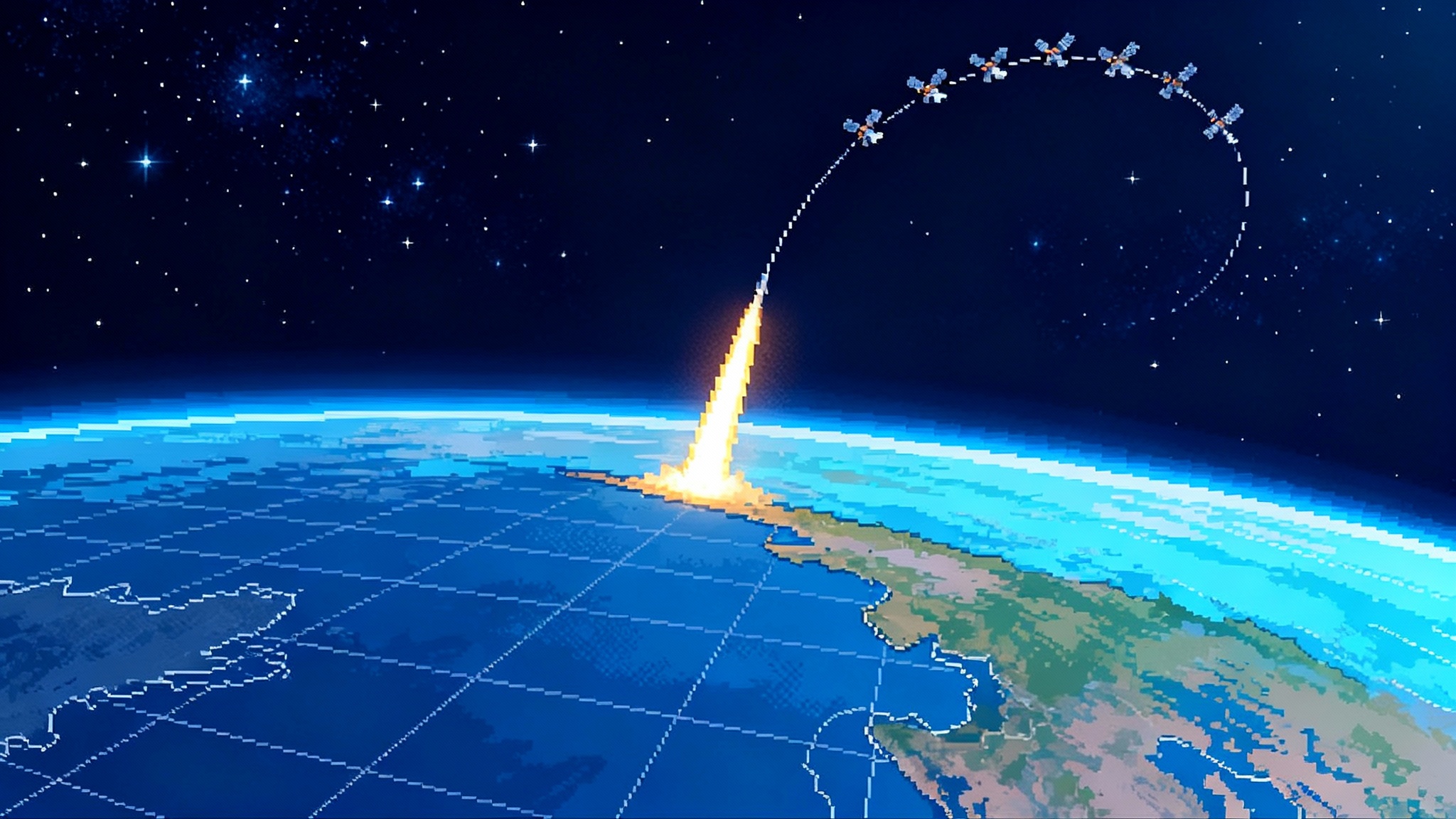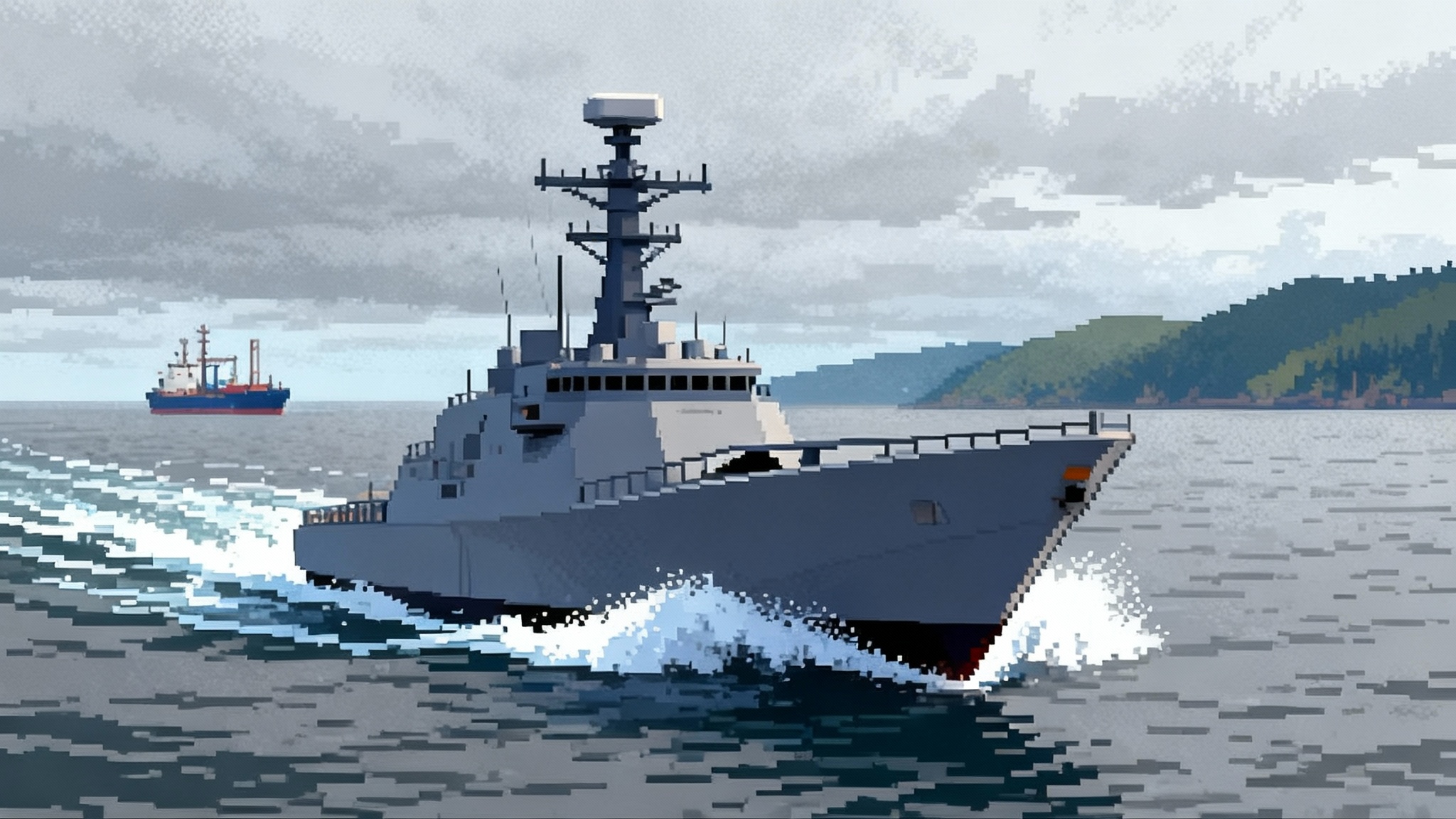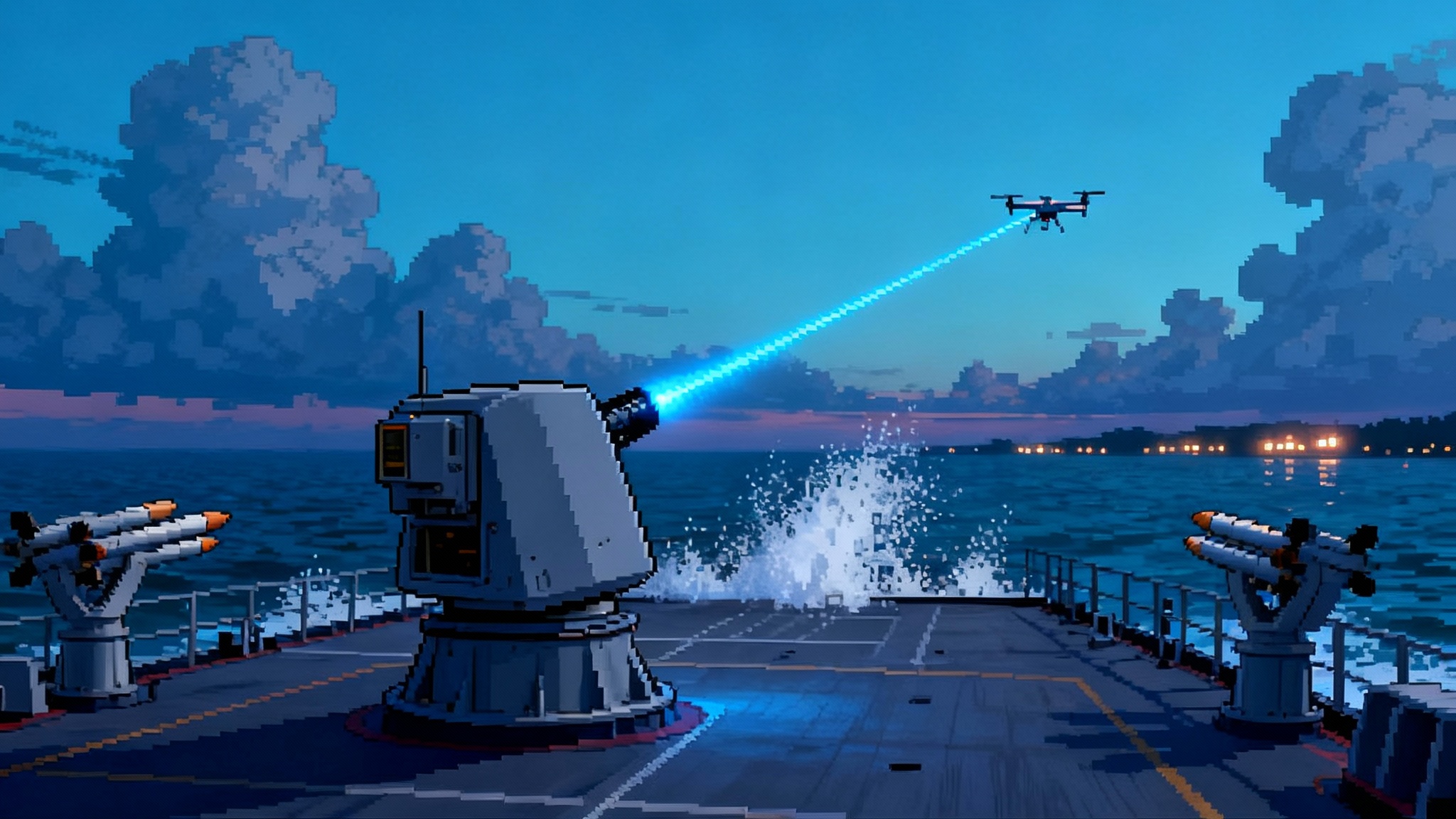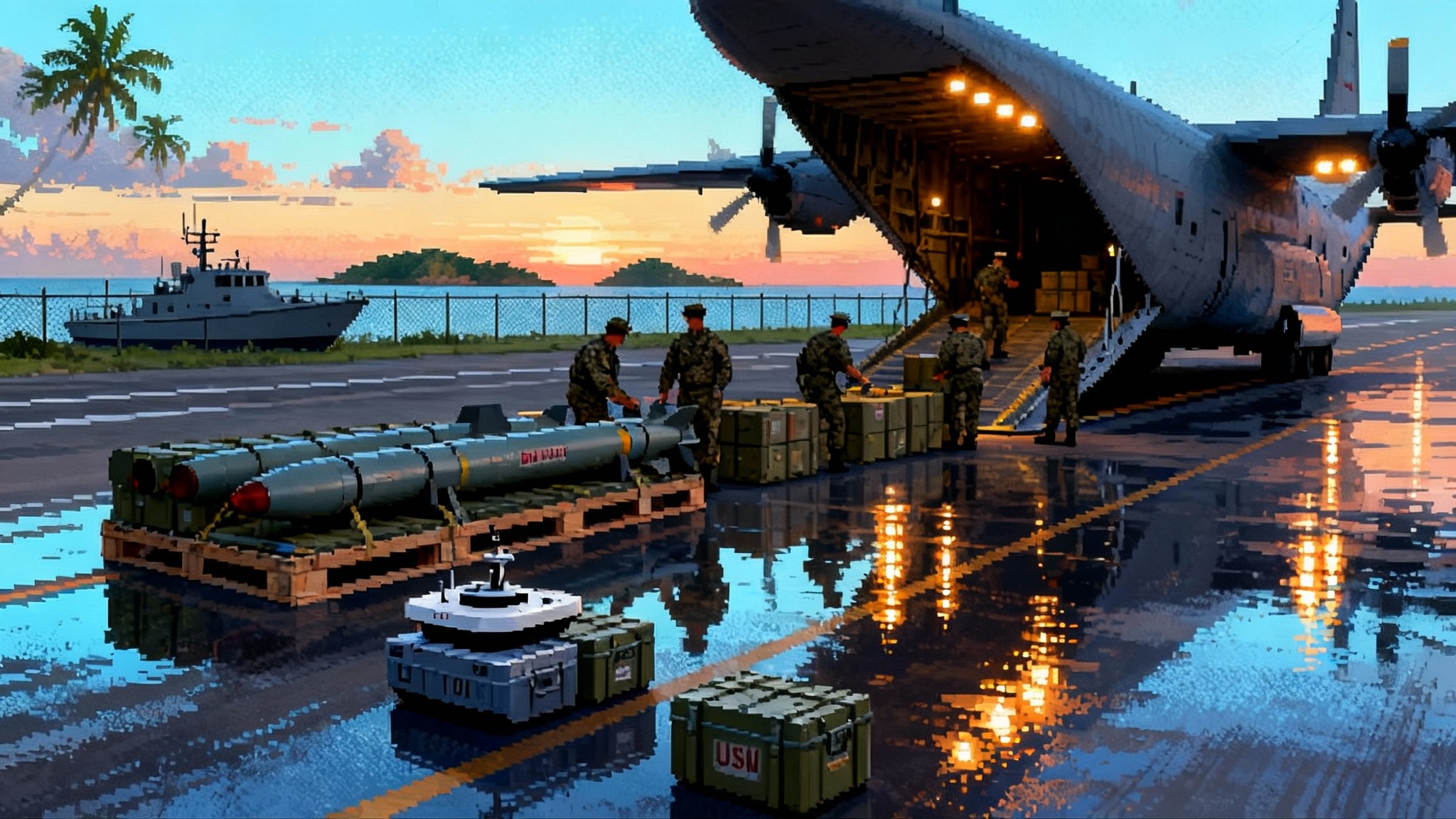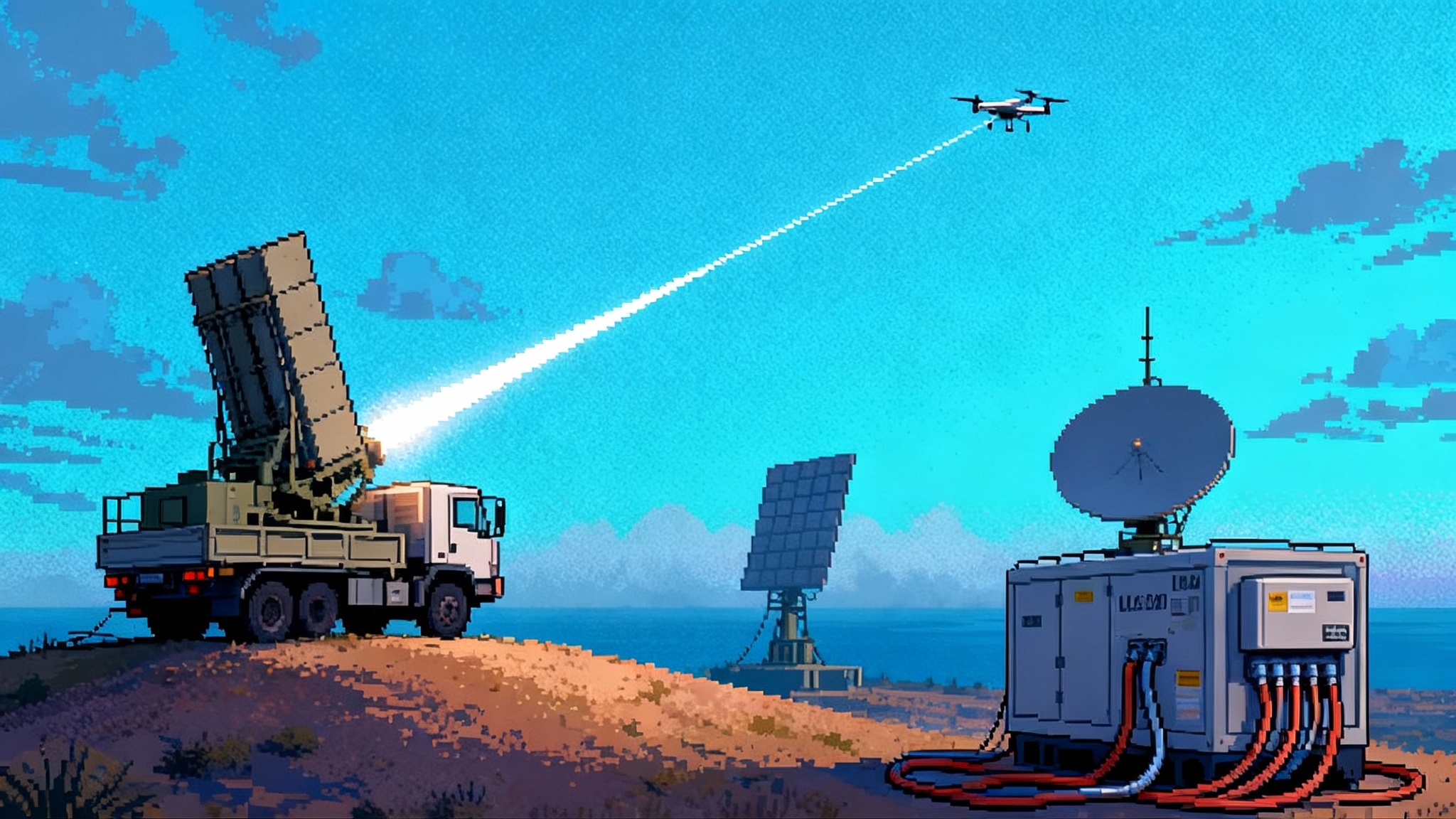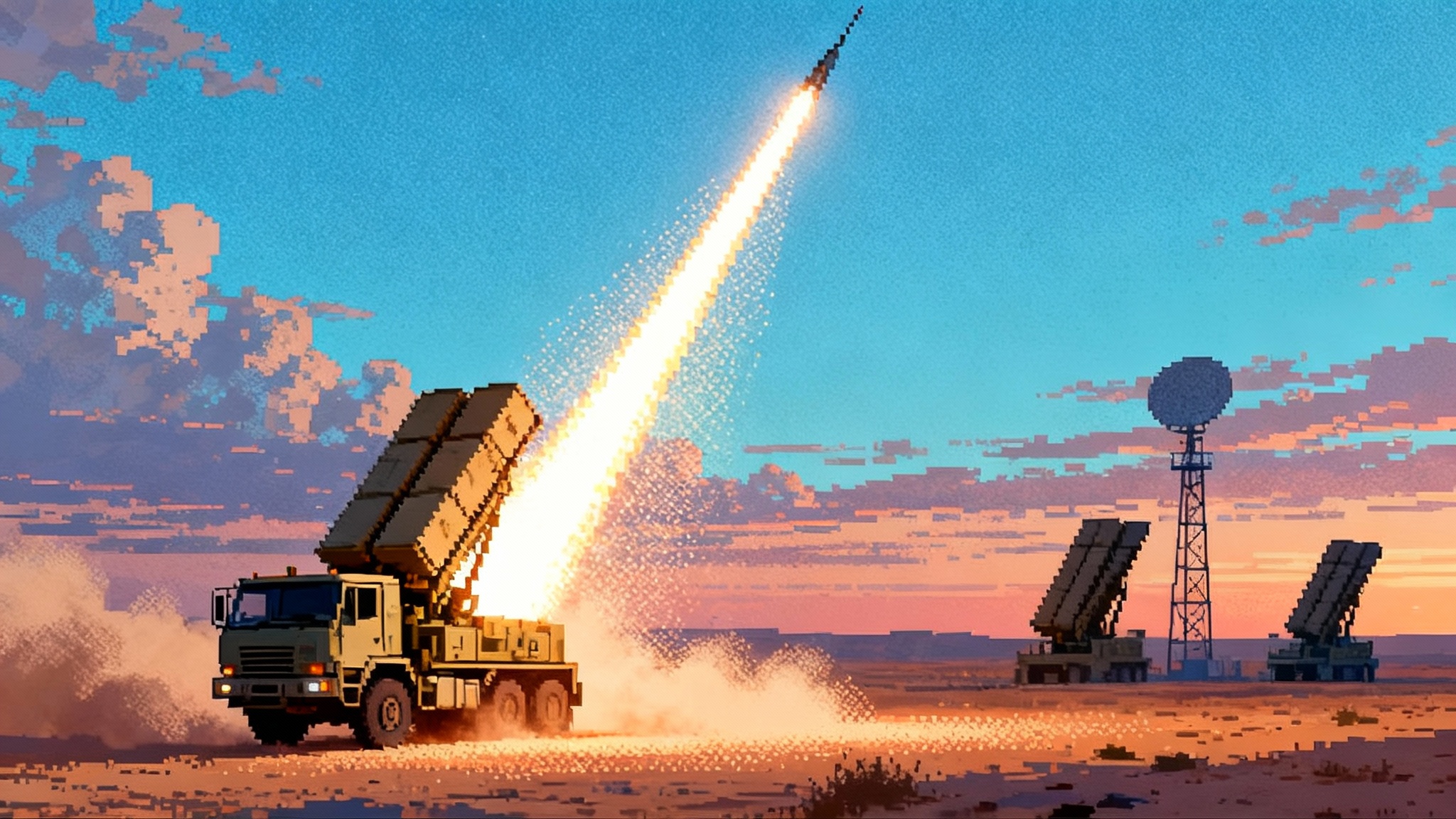Typhon Comes Ashore: Japan Debut Rewrites the First Island Chain
On September 15 the U.S. Army brought its Typhon mid range missile system to MCAS Iwakuni for Resolute Dragon, putting land based SM 6 and Tomahawk options back inside the First Island Chain. The short stay signals a durable shift in Indo Pacific deterrence rather than a one off showcase.

The day land strike returned to the First Island Chain
On September 15 the U.S. Army quietly parked a Typhon launcher on the tarmac at Marine Corps Air Station Iwakuni and let the cameras roll. The system will feature in Resolute Dragon alongside roughly 20,000 U.S. and Japanese troops, then depart. The message is the point. Typhon can fire Tomahawk cruise missiles and SM 6 interceptors from a mobile ground launcher. From western Japan that translates into theater spanning reach and new land based shooters inside the First Island Chain. Reuters captured the significance of the first Japan showcase at MCAS Iwakuni.
What is Typhon and why it matters
Typhon is the Army’s Mid Range Capability, essentially a trailer mounted Mk 41 family launcher tied to an expeditionary fire control and communications node. Its punch comes from two proven missiles:
- Tomahawk Block V: a long range cruise missile optimized for maritime strike as well as land attack. Block V carries a seeker to find and hit moving ships at sea and can be retargeted in flight.
- SM 6: a versatile missile with speed and agility to engage aircraft and cruise missiles and, in a different profile, to threaten ships on the surface. In the land role, SM 6 gives Typhon a fast time to target option for nearer tasks.
Typhon’s edge is not exotic hardware. It is the decision to put known, mass producible munitions on a relocatable land chassis. That trades some of the survivability of ships and submarines for agility in positioning, lower cost per launcher, and the ability to hide in civilian clutter. For planners, it spreads magazines across domains, which is the core of modern deterrence. It also complements other new strike nodes such as hypersonic batteries, seen when Dark Eagle lands in NT.
A new targeting geometry for the Indo Pacific
The First Island Chain has always shaped Chinese planning. It compresses sea and air movement into chokepoints and complicates the math of a cross strait or Western Pacific fight. With Typhon ashore in Japan, even temporarily, the geometry shifts.
- Maritime strike from land: Tomahawk Block V and SM 6 create overlapping engagement zones that force fleets to think in arcs, not just lines. A destroyer threading the East China Sea now faces land based salvos that can arrive from unexpected directions and complicate defensive timelines.
- Cross domain dilemmas: Typhon can act as an air defense spoiler by threatening high value aircraft and as a sea denial tool by hunting surface combatants. That duality forces adversaries to either spread defenses thin or concentrate and accept gaps elsewhere.
- Range fencing: Theater commanders can place Typhon where it closes gaps between carrier air wing range and allied airfields. The result is a continuous set of firing solutions along the chain without relying on any single base.
Deterrence is about credible cost imposition. Mobility and magazine depth make that credibility durable. Even if a launcher is present only for an exercise, the demonstration reduces ambiguity about what could show up in a crisis and how quickly.
Building the kill chain for distributed operations
A launcher is only as useful as the network that feeds it. The U.S. and Japan have been building that network for years, from undersea sensors and space based ISR to P 8 patrol aircraft, F 35s, MQ 9B SeaGuardians, and Aegis radars on land and at sea. As the SDA Tranche 1 LEO mesh comes online, Typhon plugs a ground node into that web and helps close the fire control loop fast.
- Find: Japanese and U.S. sensors work in a cooperative stack. Maritime patrol aircraft and surface radars generate tracks. Space and cyber sources add classification and intent.
- Fix: Data fusion and targeting cells validate tracks, deconflict air and sea lanes, and assign a fire unit. For maritime strike, the system must resolve a moving ship’s position and heading precisely enough to justify a shot.
- Finish: Typhon receives a mission data package, verifies launch parameters, and fires. For a Block V salvo, in flight retargeting and updates can flow from allied nodes. For SM 6 shots, speed to target and midcourse guidance are the currency.
- Assess: Unmanned systems and ISR aircraft assess battle damage and feed new tasking back into the loop, reinforced by programs like Replicator fields attritable drones.
Politics and survivability: where can launchers live
Putting land based strike into an archipelago is as much politics as logistics. Japan’s government has taken steady steps since 2022 to expand roles and missions, including buying Tomahawks for destroyers and investing in domestic standoff missiles. Local communities still weigh noise, safety, and the geopolitical heat that comes with high profile assets. A temporary Typhon presence at a major air station is easier to accept than a permanent battery on a small island. Rotational presence offers a middle path: capability without the signal of a fixed base.
Survivability is the other half. Typhon’s value rises with dispersion and deception. Launchers can hide among warehouses, in tunnels, or under camouflaged nets. They can move at odd hours and use civilian ferries or roll on roll off ships to hop islands. The battery’s command post can be pushed into hardened spaces or distributed into multiple vehicles so a single strike cannot take it all down. The more the alliance trains with local police, port operators, and prefectural governments, the more practical these options become in a crisis.
The industrial question: munitions and sustainment
The hard part is not the trailer. It is the missiles. Tomahawk and SM 6 production is ramping, but demand has outpaced supply across the services and with allies. Block V requires seekers and electronics that compete for the same components as other precision weapons. SM 6 needs airframe and motor capacity that must be scheduled years out. Batteries in Japan, the Philippines, or Australia do not change physics. They change the demand signal.
Sustainment is another challenge. A dispersed Typhon battery needs a steady pipeline of spares, test equipment, and trained crews. It needs range space for live fire, realistic maritime targets to validate seekers, and joint exercises where the network is stressed with jamming, cyber probes, and bad weather. Resolute Dragon is one venue. Others will follow if the political will holds.
Manila was the opening act
Typhon’s path to Japan ran through the Philippines. The system first appeared during exercises in April 2024 and lingered. Reuters reported in January that the launcher had moved within Luzon and would remain in country for the time being as the allies refined basing and procedures. That early presence, including time at Laoag and other northern sites, taught practical lessons about range safety, movement, and local coordination. It also signaled that Washington and Manila were ready to accept sharper reactions from Beijing. See Reuters’ account of how the system stayed in the Philippines.
The Philippine detour also matters for resilience. If launchers can cycle among allied territories on a predictable but flexible drumbeat, an adversary cannot plan a single preemptive strike or a single diplomatic campaign to keep them out. Japan, the Philippines, and potentially Australia or Pacific territories become part of a shared magazine rather than isolated bets.
Beijing and Moscow read the signal
Chinese and Russian officials have already called Typhon destabilizing and accused Washington of fueling an arms race. That line will continue and likely intensify now that the system has been showcased in Japan. From their perspective, land based launchers inside the First Island Chain reduce strategic depth and stress air and missile defenses across long coastlines.
There is some truth in the arms race charge. After the INF Treaty ended, the United States was free to field ground launched missiles at ranges it had forsworn for decades. China never had that constraint and built a large inventory of intermediate range systems designed to push U.S. forces back. Typhon is a catch up play, and its simplicity is the point. It turns existing missiles into a land option that allies can host on short notice.
But there is also a stabilizing angle. When both sides understand that ship killing salvos can come from land, sea, and air, the incentives to gamble with close in naval probes or coercive air patrols are weaker. The risks of miscalculation rise when capability is opaque. Typhon’s public appearances make capability more visible and therefore more calculable.
Escalation and control
None of this is risk free. Ground launchers on allied soil are highly visible politically. In a crisis, they could become priority targets for preemption. The dual role nature of SM 6 and the maritime strike upgrade to Tomahawk introduce ambiguity for an adversary watching a launch. Was it aimed at a ship or an air defense node. Is it a warning shot or a salvo.
Managing that ambiguity requires discipline in peacetime. The alliance can publish training patterns and keep a steady tempo of exercises that make normal look normal. It can invest in hardened shelters and decoys so that an adversary cannot assume a first strike would clear the deck. It can grow the magazine so that a few losses do not empty the quiver. And it can keep cross domain communications tight so that a crisis does not turn into dueling assumptions.
What the debut actually changes
- Deterrence by presence: even a temporary showcase in Japan adds a land based arrow to the quiver and forces adversaries to plan around it.
- Faster kill chains: the more the U.S. and Japan practice find fix finish assess with a ground node, the shorter the timeline from detection to effect.
- Political normalization: each rotation makes local acceptance easier and creates bureaucratic muscle memory for permits, movement, and safety.
- Industrial urgency: more launchers with more missions move Tomahawk and SM 6 procurement from important to essential, with all the supply chain work that follows.
The bottom line
Typhon’s Iwakuni appearance is a small physical move with outsized strategic impact. It brings ground launched maritime and land attack options back to the First Island Chain in a way that is mobile and politically manageable through rotations. Beijing and Moscow will protest, and the arms race frame will get louder. The alliance answer is simple. Make the network real. Grow the magazine. Practice the kill chain until it hums. Then roll the launcher in again when the exercise calendar turns. If that cadence holds, the geometry of deterrence in the Western Pacific will look different by the next Resolute Dragon, helped along by additional nodes such as Dark Eagle lands in NT and the SDA Tranche 1 LEO mesh.
